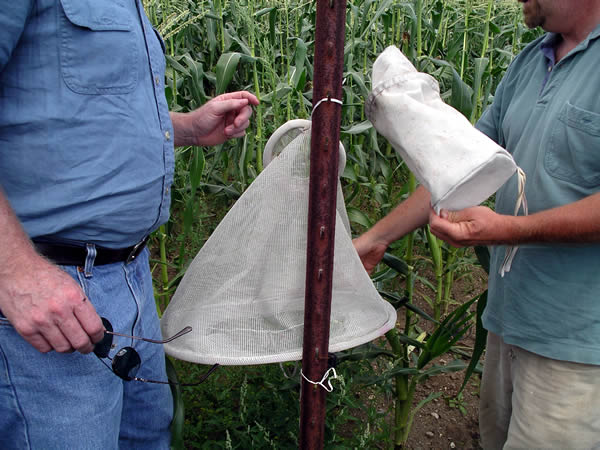Integrated Pest Management

Description
An Integrated Pest Management (IPM) approach can be used to effectively prevent and control pests (including weeds) in a way that maximizes environmental benefits at a reduced cost to growers. IPM involves applying an array of techniques and control strategies for pest management – with a focus on using them in the proper amounts and determining when they are most needed. By choosing from all possible pest control methods (including biological control, beneficial organisms, etc.) and rotating methods, resistance to repeated chemical controls can be delayed or prevented.
Top 10 IPM Management Strategies (CTIC, 1999.)
1. Record keeping: Records of soil management, planting dates, crop rotation, weather data, preventive measures, treatments and other appropriate information should be kept. This information can be quite helpful when making weed and pest management decisions in the future.
2. Cultural practices: The pests’ environment is disrupted by rotating crops and timely harvest. Planting cover crops can suppress weed pressure, moderate nitrogen and improve soil tilth.
3. Planting practices: selecting seed genetics that have good vigor and can tolerate or resist common problems is a good start. Planting should coincide with optimum conditions, including soil temperature and moisture. Row spacing, intercropping, trap crops and other strategies can be considered to discourage or detract pests.
4. Forecasting: Site specific or local weather data is used to predict if and when pest outbreaks are likely to occur. Scouting and any necessary treatments can then be properly timed, preventing crop damage and reducing spray applications.
5. Monitoring: Regular scouting of representative areas of the field by growers or consultants, help determine if weeds, insects, diseases or other pests are approaching an economically damaging level.
6. Pest trapping: Traps that attract insects are placed near target crops. This can be done in conjunction with a larger network within a state or multi state areas to track infestations. This information can be utilized later, when populations reach a critical point.
7. Thresholds: Before treating, the pest population should reach a level that could cause economic damage beyond the cost of control. Until that threshold is reached, the cost of yield and quality will remain less than the cost of control, and therefore, treatment will not be necessary.
8. Biological controls: Growers should promote and attract many natural enemies that can inhibit pest populations. Use additional biological controls where cost effective.
9. Chemical controls: Growers select the most effective and appropriate pesticide and properly calibrate application equipment. If spray application is used, a surfactant and nozzle selection may optimize application while minimizing risk. Weather conditions should also be checked to assure appropriate timing and minimize drift.
10. Managing soil quality: Providing sufficient amounts of crop residue on the soil surface increases organic matter in the soil. Soil testing and applying proper amounts of plant nutrients including micronutrients, optimizes crop health.
References
CTIC, 1999. What’s Weed and Pest Management? Conservation Technology Information Center, 1999.
http://www.ctic.purdue.edu/Core4/ipm/IPM.html
Other Recommended Links
UMass Extension IMP Turf Project information:
http://www.umass.edu/umext/ipm/ipm_projects/turf.html
Professional Guide for IPM in Turf for Massachusetts, UMass Extension:
http://www.umassturf.org/publications/extension_turf_pubs.html